Slime might be a big hit with kids these days, but trust me, there are even more exhilarating science experiments out there for them to explore! *Surprise!* In fact, these could even make learning fun and enjoyable for them. Convincing children to develop a passion for science may not be a piece of cake. Yet, we can certainly provide them with alternatives that are much more captivating than just creating slime.
It just creates a mess and wastes valuable laundry detergent in the process. Sure, it’s easy to teach and easy to make, but that’s about it. Thankfully, there are plenty of easy science experiments you can teach your kids with things around the house, and none require detergent to do it.
Plus, I’m willing to bet these projects will be considered much cooler than slime. So, get your lab coat on, and get ready to learn about these 15 Science Projects Better Than Making Slime.
Tie-Dyed Milk
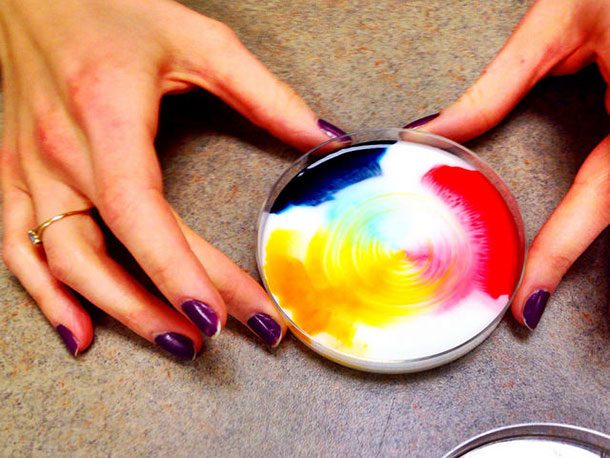 Source: https://www.teacherstryscience.org/kidsexperiments/tie-dyed-milk
Source: https://www.teacherstryscience.org/kidsexperiments/tie-dyed-milk Want to make a liquid that looks wicked cool to wow your kids? Of course, you do! What you’ll need for this project is room temperature milk, food coloring, liquid soap, and a shallow container. Fill the pan until the bottom is coated in milk, add some food coloring and dip the toothpick in the soap before dropping it in the middle of the pan. Watch the magic happen!
White Flowers in Colored Water
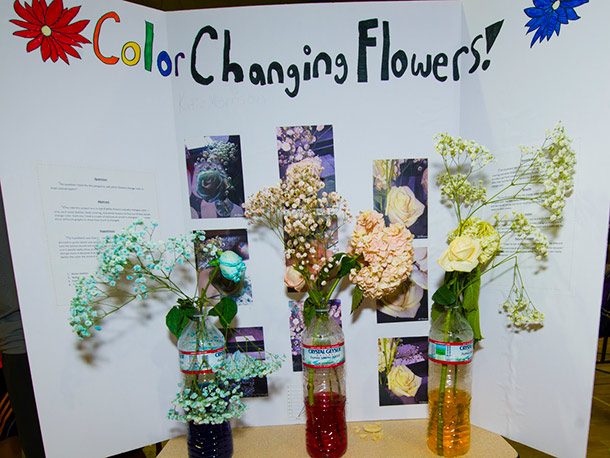 Source: https://www.stevespanglerscience.com/lab/experiments/colorful-carnations/
Source: https://www.stevespanglerscience.com/lab/experiments/colorful-carnations/ If you want to show your students where water goes through the stem of a flower, this experiment will do just that, plus provide that extra wow effect. It’s really easy, too. Simply place some white flowers into a jar of water and add some food coloring. Eventually, the flowers will change colors.
Gravi-Goo
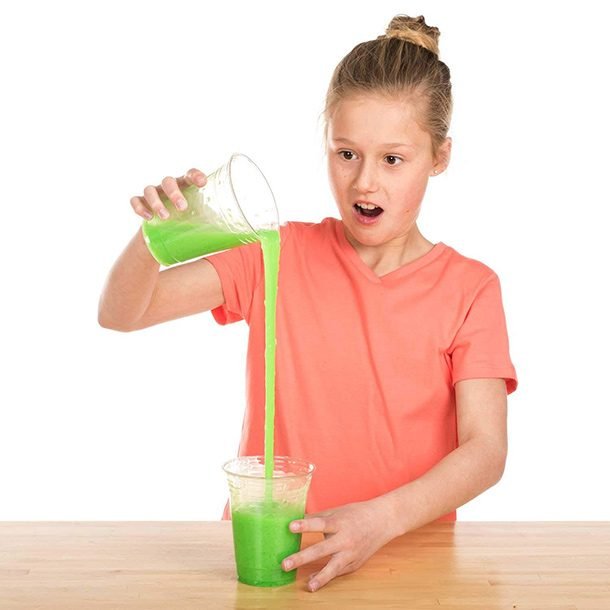 https://amzn.to/2SMhQah
https://amzn.to/2SMhQah Similar to slime, but way better, this “Gravi-goo” is a long polymer that looks like it defies gravity, hence the name. This experiment will help teach kids Newton’s law of motion and all you need is the Gravi-goo and some water.
Make Your Own Butter
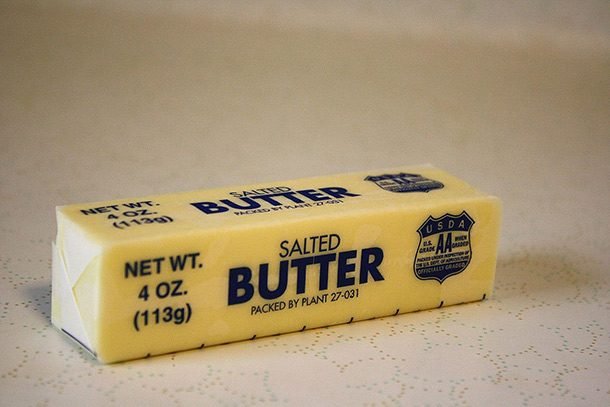 Source: https://mommypoppins.com/weework-kid-recipe-how-to-make-homemade-butter
Source: https://mommypoppins.com/weework-kid-recipe-how-to-make-homemade-butter Want to teach kids how butter is made? This easy to do science project will do just that. All you need is a jar with a tight lid, heavy cream, and a clean marble.
Put the cream and marble inside, seal up the jar, and have your kids shake it for a long time. It could take up to 30 minutes. Once done, pour off the remaining buttermilk, remove the marble, and the butter should be on the bottom.
Insta-snow
 https://amzn.to/2QipyYg
https://amzn.to/2QipyYg With this awesome product, you can have snow all year, even in Florida!
All you have to do is add water to the Insta-snow product, and it’ll turn into snow. Better yet, there’s a guide that’ll be able to explain the science behind it that you can teach your kids.
Homemade Ice Cream
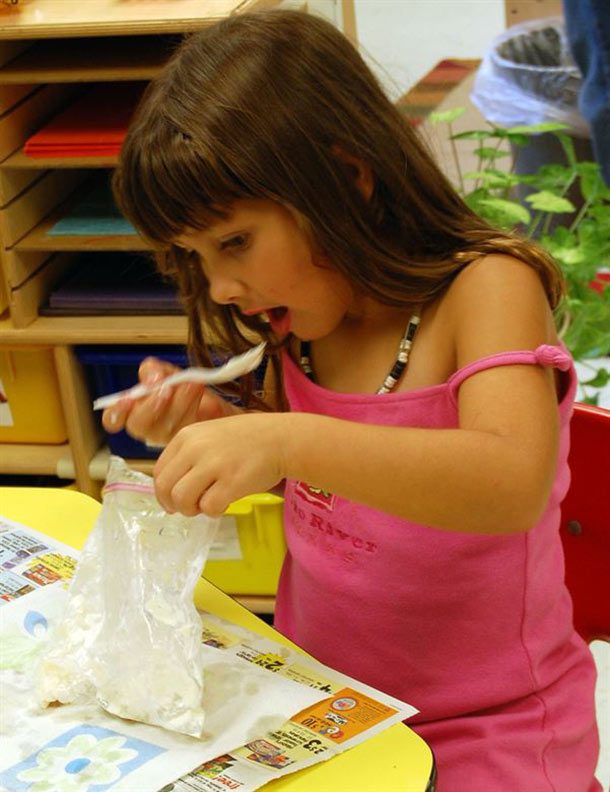 Source: http://science.howstuffworks.com/innovation/edible-innovations/ice-cream3.htm
Source: http://science.howstuffworks.com/innovation/edible-innovations/ice-cream3.htm Teaching kids about science doesn’t always have to be gross or boring, it can actually have a tasty result. To do this experiment, you’ll need 1 tablespoon sugar, ½ cup milk, cream, ¼ teaspoon vanilla extract (or other flavoring), 6 tablespoons salt, ice to fill the gallon-sized bag halfway, 1 gallon-sized Ziploc bag, and 1 pint-sized Ziploc bag.
Larger salt crystals work much better for this experiment. Add the salt and ice to the gallon-sized bag and the remaining ingredients in the pint-sized bag. Add the pint-sized bag to the gallon-sized bag, seal it, and shake it for five minutes. By the end, you should have delicious ice cream.
Pop Rocks Expander
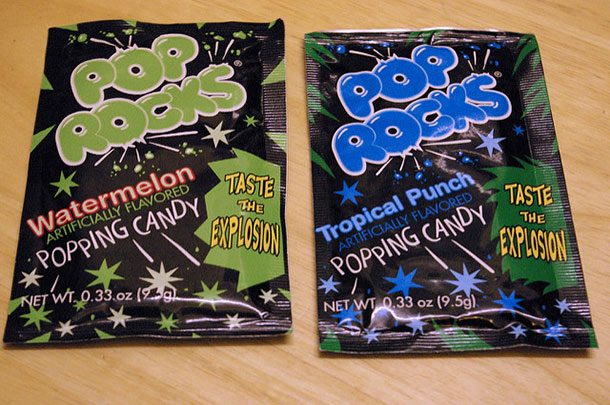 Source: http://science.howstuffworks.com/innovation/edible-innovations/ice-cream3.htm
Source: http://science.howstuffworks.com/innovation/edible-innovations/ice-cream3.htm Who doesn’t love pop rocks? With this science experiment, you’ll need a 20 oz bottle of soda, a packet of pop rocks, a balloon, and a funnel. Place the funnel inside the balloon and pour the pop rocks into the balloon.
Then, wrap the opening of the balloon around the open soda bottle. When you’re ready, lift the balloon to drop the pop rocks inside. The balloon should inflate.
Steve Spangler's Jelly Marbles
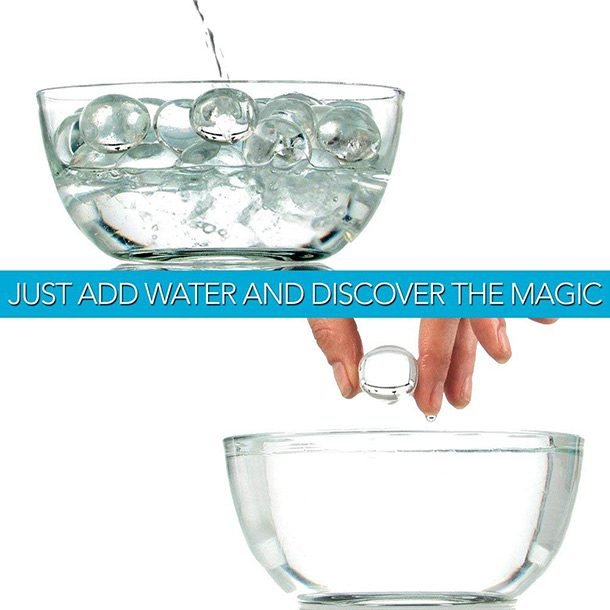 https://amzn.to/2yU5wN4
https://amzn.to/2yU5wN4 These amazing beads absorb over 300 times their weight in water.
Once you pour them into a bowl of water, it looks like they vanish. Take them out of water, they’ll dry out, and you can use them over and over again.
Growing Rock Candy
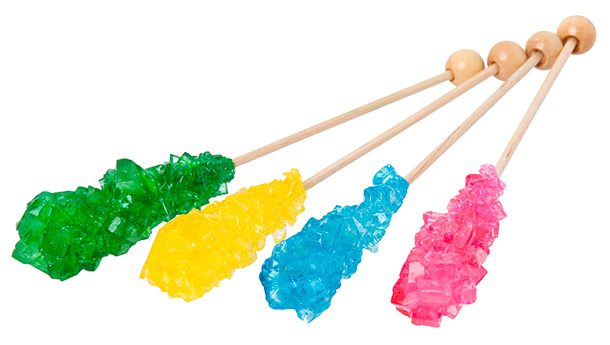 Source: https://www.instructables.com/id/Grow-Your-Own-Rock-Candy/
Source: https://www.instructables.com/id/Grow-Your-Own-Rock-Candy/ This project is super easy and will, of course, taste sweet once you’ve finished it. Keep in mind, it might take up to a week to complete. I know, that’s a long time to wait, but it’s worth it. To do this project, you’ll need 1 cup water, 3 cups table sugar, a clean glass jar, a butter knife, a string, a pan or bowl, and spoon.
Tie the string to the butter knife and place it over a glass jar with the string hanging inside without touching the sides. Boil the water, stir in the sugar, and if you want colored rock candy, put in a few drops of food coloring.
Pour your sugary solution into the glass jar and perhaps cover it with a coffee filter so no particles get inside. Keep checking back each day to see if sugar crystals are growing.
Invisible Ink
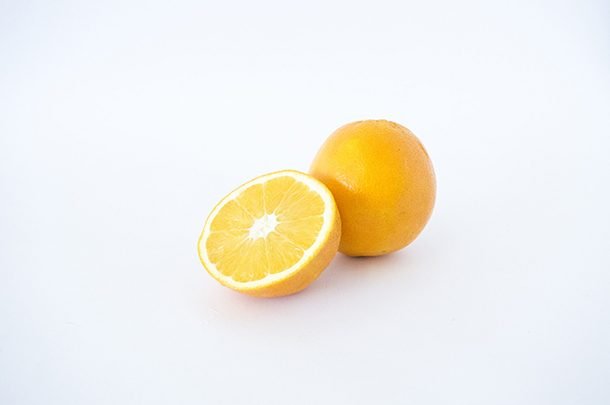 Source: http://www.sciencekids.co.nz/experiments/invisibleink.html
Source: http://www.sciencekids.co.nz/experiments/invisibleink.html If your students are aspiring secret agents or just want a way to pass secret notes, this easy invisible ink solution will certainly blow their minds. You’ll need lemon juice, water, a spoon, a bowl, a cotton bud, white paper, and a lamp.
Squeeze lemon juice into a bowl, add a few drops of water and mix it with a spoon. Dip the cotton bud in the water just slightly and use it to write a message on the paper. Let it dry and then show your students the message under a lamp.
Egg Into a Milk Bottle
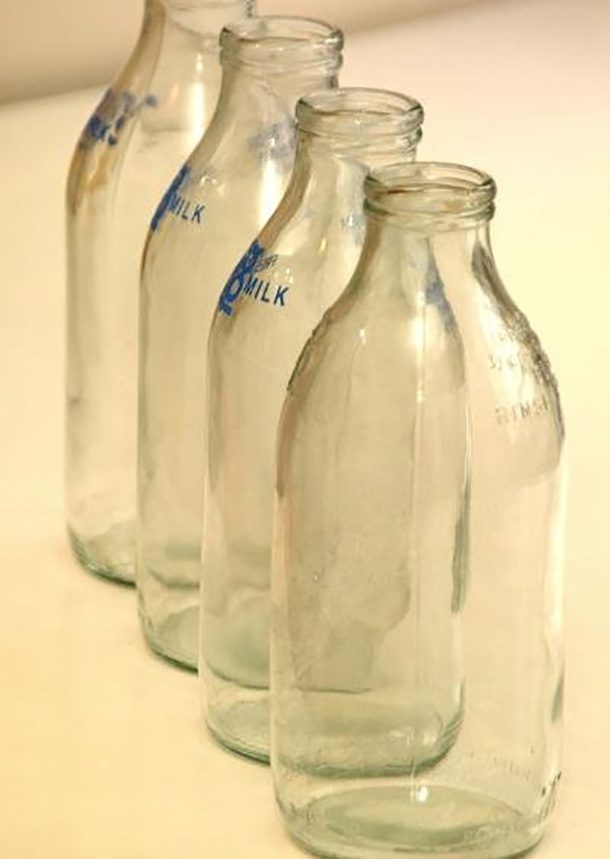 Source: https://www.wikihow.com/Get-an-Egg-Into-a-Bottle
Source: https://www.wikihow.com/Get-an-Egg-Into-a-Bottle This might sound silly, but putting an egg in a milk bottle is totally possible. First, boil the egg and peel the shell. Then, place a birthday candle barely on one end of the egg.
Light the candle (with adult supervision, of course) and place the bottle upside down over the egg, but not enough to fully enclose it.
Let the heat inside the bottle for a bit before allowing the egg to fully sit on top. The candle will likely go out but gradually the egg will slip right through.
Elephant's Toothpaste
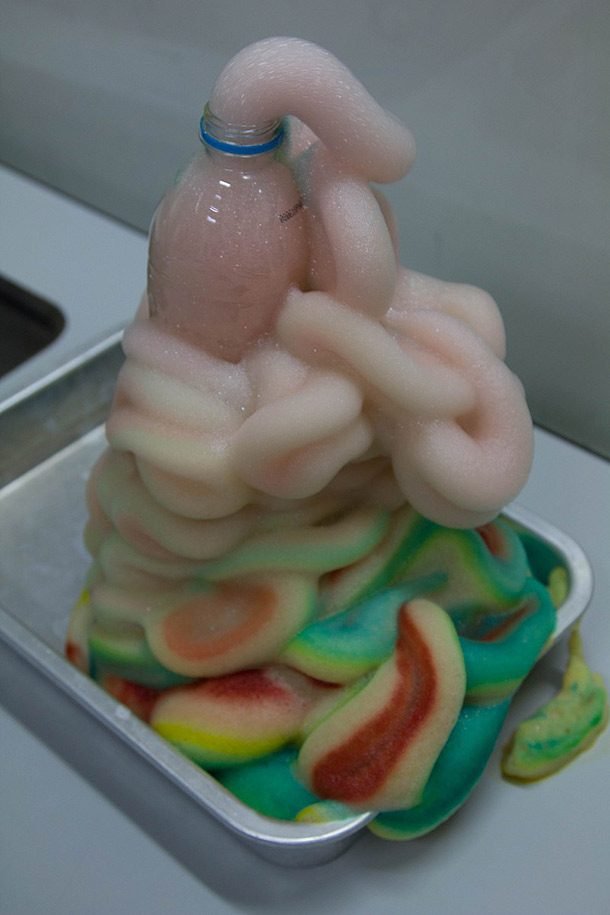 Source: https://amzn.to/2quEZ4l
Source: https://amzn.to/2quEZ4l This is an awesome project for kids ages 6 to 10, but it definitely requires parental supervision. Four individually packaged science experiments that push the boundaries of ordinary toothpaste in extraordinary ways.
Levitating Orb
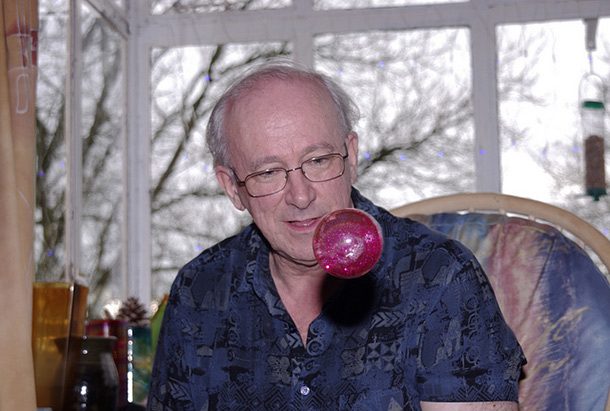 Source: https://sciencebob.com/make-a-levitating-orb/
Source: https://sciencebob.com/make-a-levitating-orb/ If you’re looking to show your students some serious science wizardry, then you need to do this science project. Here’s what you’ll need: A regular balloon, Mylar tinsel for Christmas trees about 1 millimeter wide, head of dry hair, and scissors.
First, tie the tinsel together at both ends and cut off the remaining parts at each end with scissors. Rub the balloon on your hair for ten or more seconds until there’s a charge. Pick up the tinsel and place it close to the balloon. It should stick to the balloon but eventually start levitating above it.
Growing Bacteria
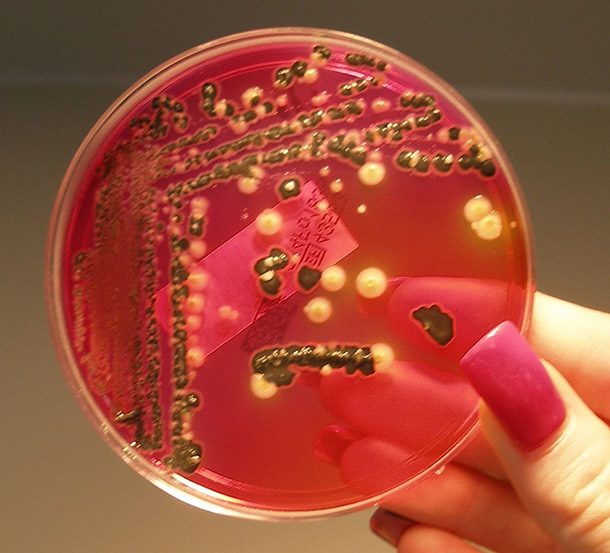 https://list25.com/refer/bacteria-science-kit/
https://list25.com/refer/bacteria-science-kit/ I know this sounds pretty gross, but to your kids, it’ll probably be super cool.
Using this kit, all you have to do is wipe an area with a sterile cotton swab, like the kitchen counter or a toilet, and then wipe that swab on the agar plate. Put the plate under a desk lamp to incubate and eventually you’ll start seeing the bacteria growing.
Blobs in a Bottle
 Source: https://sciencebob.com/blobs-in-a-bottle-2/
Source: https://sciencebob.com/blobs-in-a-bottle-2/ With this project, you’ll basically create your own lava lamp but without plugging anything in. And I have to admit, I think this one is the coolest of all of them.
You’ll need a clean 1 liter clear soda bottle, a funnel, 3/4 cup of water, vegetable oil, fizzing tablets like Alka Seltzer, and food coloring.
First, pour water into the bottle, then using a funnel, slowly pour the oil in and wait til it separates. After that, put in a few drops of food coloring and then put in the fizzing tablet. To keep it going, you just need to put in another fizzing tablet.



























